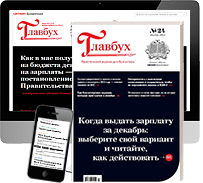Приложение
How to install the app on iOS
Follow along with the video below to see how to install our site as a web app on your home screen.
Примечание: This feature may not be available in some browsers.
-







Любые журналы Актион-МЦФЭР регулярно !!! Пишите https://www.nado.ws/conversations/add?to=pantera или на электронный адрес pantera@nado.ws
Вы используете устаревший браузер. Этот и другие сайты могут отображаться в нём некорректно.
Вам необходимо обновить браузер или попробовать использовать другой.
Вам необходимо обновить браузер или попробовать использовать другой.
Collection Download Ebooks Best Seller Updated Daily
- Автор темы booksz
- Дата начала

Chemical Principles of Nanoengineering
by Andrea R Tao
English | 2023 | ISBN: 3527339558 | 251 pages | True PDF | 22.52 MB
Chemical Principles of Nanoengineering
Understand the chemical properties of nanomaterials with this thorough introduction
Nanomaterials, which possess at least one dimension lower than 100 nanometers, are increasingly at the forefront of technological and chemical innovation. The properties of these uniquely minute materials give them distinctive applications across a huge range of industries and research fields. It is therefore critical that the next generation of engineers and materials scientists understand these materials, their chemical properties, and how they form bonds.
Chemical Principles of Nanoengineering answers this need with a thorough, detailed introduction to nanomaterials and their underlying chemistry. It particularly emphasizes the connection between nanomaterial properties and chemical bonds, which in turn allows readers to understand how these properties change at different scales. The result is a critical resource for understanding these increasingly vital materials.
Chemical Principles of Nanoengineering readers will also find:
Step-by-step arrangement of material to facilitate learning in sequence and gradual, self-guided progress
End-of-chapter problems and key concept definitions to reinforce learning
Detailed coverage of important nanomaterials like quantum dots, carbon nanotubes, graphene, and more
Chemical Principles of Nanoengineering is a must-have for advanced undergraduates and beginning graduate students in materials science, chemical engineering, chemistry, and related fields.
Код:
Rapidgator
https://rg.to/file/8b2acb521492bba16dc5a7ca189683ff/okule.7z.html
TakeFile
https://takefile.link/nj7zrb80hfsn/okule.7z.html
[b]Fileaxa[/b]
https://fileaxa.com/pblv4qsdp6ll/okule.7z
Fikper
https://fikper.com/QglS4u4ZK7/okule.7z.html
Chemistry of Plants: Perfumes, Pigments and Poisons by Margareta Séquin
English | February 5, 2021 | ISBN: 1788019016 | 230 pages | PDF | 5.51 Mb
Why are some plants so important to humans? The chemistry of the plants has a lot to do with it!
The plant world offers a fascinating way to explore basic chemistry concepts. The spectacular variety of colors, fragrances and other characteristics of plants are driven by the seemingly subtle differences in the structure and properties of organic compounds. Well-known flowers, like daffodils and narcissus, are examples of plants that provide ample perfumes, pigments and poisons as part of their intricate and fascinating chemistry.
This second edition retains it accessibility, expanding on the first edition and combining scientific concepts with colorful pictures and stories in simple, clear language. Readers will find introductory information on some chemistry and plant biology. This prepares them for the more complex chemical structures that compose plant substances, many of them of vital importance to humans. The final chapter has been expanded, in particular the sections on medicinal plants and on genetic modification. The end-of chapter references have been thoroughly updated with articles, books, and relevant websites that illustrate the topics discussed.
Dr Margareta Sequin, an organic chemist and plant enthusiast, has taught popular undergraduate college level courses on plant chemistry to non-chemistry majors and has led numerous field seminars for the general public. The comments and questions from these audiences and the topics that especially captured people's interest have greatly shaped this book.
The Chemistry of Plants addresses an audience with little previous chemistry knowledge, but will appeal to the expert reader looking for an understanding of more complex plant compounds. It can be used both as a text to introduce organic chemistry as it relates to plants and as a text of reference for more advanced readers.
Код:
Rapidgator
https://rg.to/file/45dea12f5ef1b47f48536073b5ed494a/e1hin.7z.html
TakeFile
https://takefile.link/giva3b06ehx1/e1hin.7z.html
[b]Fileaxa[/b]
https://fileaxa.com/wsud50g5lozy/e1hin.7z
Fikper
https://fikper.com/lmlX8sS9xw/e1hin.7z.html
Kelly Marcil, "Cholesterol Lowering Cookbooks: Superfoods and Dairy Free for a Low Cholesterol Diet"
English | 2013 | ISBN: 1631877933 | EPUB | pages: 242 | 0.3 mb
Cholesterol Lowering Cookbooks Superfoods and Dairy Free for a Low Cholesterol Diet
In today's world there are plenty of reasons to want cholesterol lowering foods. We're nowhere near as active as we were in years past, and none of us are as active as we were when we were children. That being said, finding good cholesterol lowering recipes should be at the forefront of everyone's mind!
This book covers a number of different food items, many of which are specifically designed for those suffering from lactose intolerance. There are a fair amount of people in this world suffering from the condition, as is the rest of the animal kingdom. Unfortunately, most recipes are based on dairy as 70% of people are not concerned with it.
In addition to that, you will also find a cholesterol lowering diet plan for every day of the week. If you are new to dieting, the concept of creating your own meal plans might be a git overwhelming.
Код:
Rapidgator
https://rg.to/file/1d694f544df41639d95cc9ddde88240d/kqsst.7z.html
TakeFile
https://takefile.link/sdyq4ii3knvj/kqsst.7z.html
[b]Fileaxa[/b]
https://fileaxa.com/k22h1raral97/kqsst.7z
Fikper
https://fikper.com/Ubjph8tFdd/kqsst.7z.html
Howard Clark, "Civil Resistance in Kosovo"
English | 2000 | pages: 286 | ISBN: 0745315690, 0745315747 | PDF | 1,0 mb
The world woke up to the conflict between Serbs and Kosovo Albanians too late - when Kosovo erupted into full-scale war in the spring of 1999. But many Balkans watchers were surprised war in Kosovo did not happen sooner. In Civil Resistance in Kosovo, Howard Clark argues that war had been avoided previously because of the self-restraint exercised by the Kosovo Albanians and their policy of nonviolence. Prior to the Kosovo Liberation Army (KLA)'s taking up of arms, Kosovo Albanians had had a long history of civil resistance in the face of Serbian ultra-nationalism. They were committed to a strategy of nonviolent resistance even as they were harassed by Serbian police, vilified in racial terms, and excluded from jobs, education and government benefits. Excluded from the 1995 Dayton Agreement, Kosovo became a breeding ground for frustration and ethnic strife, ultimately leading to war and the NATO bombings. The author traces the historical evolution of the Kosovo Albanians' struggle, from peaceful demonstrations to the KLA backlash, covering the 1980s to the present day. In assessing the achievements and limitations of nonviolence, Clark explains why the policy was ultimately abandoned and how it could have been made more effective. Importantly, this book draws on the lessons of Kosovo to provide suggestions for future peace-building.
Код:
Rapidgator
https://rg.to/file/2a69f3ab39506a84d1ee4cb3275dba72/p8yn6.7z.html
TakeFile
https://takefile.link/w9p8a8431ci1/p8yn6.7z.html
[b]Fileaxa[/b]
https://fileaxa.com/stobrfdsxh8c/p8yn6.7z
Fikper
https://fikper.com/LQbHc2oiMV/p8yn6.7z.html
Classical and Spatial Stochastic Processes: With Applications to Biology
English | 2024 | ISBN: 303177759X | 298 Pages | PDF EPUB (True) | 15 MB
This textbook provides an accessible approach to concepts and applications of stochastic processes ideal for a wide range of readers. This revised third edition features an intuitive reorganization with concrete topics introduced early on which are then used to demonstrate more abstract concepts in later chapters. The author has kept chapters short and independent from each other, with several of the longer chapters from previous editions now divided into smaller, more manageable parts. These changes build upon previous editions to allow readers even greater flexibility.
Код:
Rapidgator
https://rg.to/file/ec1f7c5d68f3325ed518e1fa097ac77b/rzmyz.7z.html
TakeFile
https://takefile.link/6rngcllpg34f/rzmyz.7z.html
[b]Fileaxa[/b]
https://fileaxa.com/4sa7y2vsktef/rzmyz.7z
Fikper
https://fikper.com/cfho27ZYSI/rzmyz.7z.html
Climate Denial in American Politics: #ClimateBrawl
by Gerald Kutney
English | 2024 | ISBN: 1032592796 | 275 Pages | True PDF | 3.1 MB
Climate Denial in American Politics is a detailed examination of the rise within American politics of climate denialism, the counter movement which challenges the accepted science of climate change.
Organized around the administrations of American presidents from Roosevelt to Biden, this book provides an unprecedented account of climate denial within both the White House and Congress, and the 'climate brawls' that followed. This volume is a rebuke to discredit the climate denier, their propaganda, and their sources. Gerald Kutney examines the evolution of American political thought on climate change and provides a comprehensive survey and analysis of the sordid history of the propaganda which has promoted climate denial and corrupted politicians in America. He uses direct quotes from primary sources, such as government records, to show the extreme and pervasive nature of anti-science opinions made by political climate deniers and limit any misinterpretation that might result from paraphrasing. Weaving the account of climate denialism in American politics with anecdotes from Kutney's own decade-long experience of challenging climate deniers on Twitter using #ClimateBrawl, this book provides a valuable insight into the world of climate obstruction.
Climate Denial in American Politics will be of great interest to students and scholars of climate change, environmental politics and American politics more broadly.
Код:
Rapidgator
https://rg.to/file/5989c578245b6da6b98eb942a38e85da/ir3ob.7z.html
TakeFile
https://takefile.link/0edwpox8ho8v/ir3ob.7z.html
[b]Fileaxa[/b]
https://fileaxa.com/wznf2nl7ghq9/ir3ob.7z
Fikper
https://fikper.com/sGVtIw6Caa/ir3ob.7z.html
Philip Jevon, "Clinical Diagnosis"
English | ISBN: 1444335162 | 2011 | 216 pages | PDF | 2 MB
The role and function of the nurse is rapidly changing. Some nurses are now required to undertake clinical diagnosis of the patient, a responsibility traditionally undertaken by a doctor. Clinical Diagnosis helps prepare nurses to fulfill this role, providing them with the skills and underpinning knowledge to make clinical diagnoses of patients effectively. Each chapter follows the same layout for each symptom or sign, exploring the definition, causes, history, precipitating factors, associated signs and symptoms, important considerations, relevant clinical examination, and investigations and tests.
The first UK text to explore clinical diagnosis from a nursing perspective
In the Essential Clinical Skills for Nurses series
Written by an authority in the field
Read more
Код:
Rapidgator
https://rg.to/file/3bdc1cb31372e2d75989882b14f8642d/aovqo.7z.html
TakeFile
https://takefile.link/onyogmruw1lz/aovqo.7z.html
[b]Fileaxa[/b]
https://fileaxa.com/mvf88grjd8lj/aovqo.7z
Fikper
https://fikper.com/hkrufEIqUA/aovqo.7z.html
Clinical Genetics and Genomics at a Glance
by Neeta Lakhani, Kunal Kulkarni, Julian Barwell, Pradeep Vasudevan, and Huw Dorkins
English | 2024 | ISBN: 1119240956 | 269 pages | True PDF | 75.78 MB
Clinical Genetics and Genomics at a Glance
The market-leading at a Glance series is popular among healthcare students and newly qualified practitioners, for its concise and simple approach and excellent illustrations.
Each bite-sized chapter is covered in a double-page spread with clear, easy-to-follow diagrams, supported by succinct explanatory text.
Covering a wide range of topics, books in the at a Glance series are ideal as introductory texts for teaching, learning and revision, and are useful throughout university and beyond.
Everything you need to know about Clinical Genetics and Genomics ... at a Glance!
Comprehensive and accessible overview of genetics in clinical practice with a unique systems-based approach
Clinical Genetics and Genomics at a Glance combines the clinical and scientific facets of a complex subject in a way that is both accessible and succinct to facilitate the diagnosis, treatment, and management of common genetic conditions.
Using the popular "at a Glance" format, this book enables the reader to gain a solid understanding of the practical applications of clinical genetics in different systems. Covering a wide range of topics, this book is perfect for an introduction on the subject texts or for revision purposes and are useful throughout medical school and beyond.
Clinical Genetics and Genomics at a Glance uses a systemic approach following all the systems in the body:
General topics such as inheritance, cytogenetic and molecular genetic techniques, how to read a genetic test report, and genetic counselling
Chapters on key conditions with a genetic basis, organised by body systems, for example:
Cardiology topics such as congenital heart disease, ischaemic heart disease, cardiomyopathies, arrhythmias, and sudden cardiac death
Dermatology topics such as tuberous sclerosis, Gorlin syndrome, Darier disease, lamellar ichthyosis, mal de meleda, cutaneous porphyria, and epidermolysis bullosa
Endocrinology topics such as adrenal gland conditions, androgen insensitivity syndrome, ambiguous sex syndromes, anorchism, Klinefelter syndrome, Turner syndrome, and diabetes mellitus
Clinical Genetics and Genomics at a Glance is a helpful learning aid that can be used at various stages of medical training to gain an understanding of the aspects of clinical genetics and the fundamentals behind the specialty. The text also functions as a useful on-ward reference tool for practitioners of all experience levels.
Код:
Rapidgator
https://rg.to/file/eeef7de4d66a73b7242160bb49352a88/c8b63.7z.html
TakeFile
https://takefile.link/i8id5vtgcid0/c8b63.7z.html
[b]Fileaxa[/b]
https://fileaxa.com/3etmryh8v1aj/c8b63.7z
Fikper
https://fikper.com/ODC9iIGINx/c8b63.7z.html
Clinical Reasoning der unteren Extremität: Entscheidungsprozesse in der Physiotherapie
Deutsch | 2024 | ISBN: 3662693992 | 273 Pages | PDF (True) | 50 MB
Dieses Praxisbuch liefert den idealen Überblick über die unterschiedlichen Clinical Reasoning Prozesse in der Physiotherapie. Die klare Struktur und die fundierte wissenschaftliche Methodik zeichnen dieses Buch aus. Von Screening Verfahren bis hin zu spezifischen Gelenkfunktionsstörungen und physiotherapeutischen Untersuchungsmethoden werden Sie durch jede Phase des Screening Prozesses geführt. Aus dem Inhalt: Grundlagen des Screenings und der physiotherapeutischen Befunderhebung, Befund und Differenzialdiagnostik bei Schmerzen im Fuß, Knie, Hüfte und unterem Rücken, Plus: Complex Maps zum Download.
Код:
Rapidgator
https://rg.to/file/df02de8f4524f430d40ba75cea49be95/hhqlw.7z.html
TakeFile
https://takefile.link/siahf46gy4th/hhqlw.7z.html
[b]Fileaxa[/b]
https://fileaxa.com/rmim7ik3yt0i/hhqlw.7z
Fikper
https://fikper.com/YEUtkYGVOi/hhqlw.7z.html
Combinatorial Pattern Matching: 7th Annual Symposium, CPM 96 Laguna Beach, California, June 10-12, 1996 Proceedings By Ricardo Baeza-Yates, Gonzalo Navarro (auth.), Dan Hirschberg, Gene Myers (eds.)
1996 | 400 Pages | ISBN: 3540612580 | PDF | 7 MB
This book constitutes the refereed proceedings of the 7th Annual Symposium on Combinatorial Pattern Matching, CPM '96, held in Laguna Beach, California, USA, in June 1996.The 26 revised full papers included were selected from a total of 48 submissions; also included are two invited papers. Combinatorial pattern matching has become a full-fledged area of algorithmics with important applications in recent years. The book addresses all relevant aspects of combinatorial pattern matching and its importance in information retrieval, pattern recognition, compiling, data compression, program analysis, and molecular biology and thus describes the state of the art in the area.
Код:
Rapidgator
https://rg.to/file/d2d0eaa091f4fc52b83dd8cb5bacb72a/itir3.7z.html
TakeFile
https://takefile.link/ftka5lkvnscf/itir3.7z.html
[b]Fileaxa[/b]
https://fileaxa.com/d1mhfr8fgqit/itir3.7z
Fikper
https://fikper.com/bpdree1zJr/itir3.7z.html
Robert Ribeiro, "Commercial Litigation: Damages and Other Remedies for Breach of Contract"
English | 2005 | pages: 88 | ISBN: 1854183974 | PDF | 0,2 mb
Time-honored principles, long regarded as rules, eg. 'new for old' compensation, have been radically altered
Courts have moved from applying broad principles to making judgments based on the precise facts in front of them-known as the 'fact-specific' approach. In some cases the same set of facts can now be argued either on the basis of contract or of tort - which way you go is a crucial question of tactics
This valuable report has been completely updated since it first appeared in 2002 (Damages and Other Remedies for Breach of Commercial Contract): it includes accounts of all the most recent important cases and highlights significant changes in the way that the courts now assess damages.
It sets out a systematic approach for assessing the remedies available for various types of breach of contract, what the remedies mean in terms of compensation and how the compensation is calculated.
It examines the most recent case law as well as classic earlier cases and explores the issues involved; in particular the defences.
The report provides numerous examples of effective drafting of terms controlling and limiting remedies - as well as illustrating the type of poor drafting to be avoided.
Plus helpful tables, figures and calculations and a search analysis of the mathematical and financial implications of awarded damages.
Код:
Rapidgator
https://rg.to/file/c7937e4c5d0434aacbf5f2754004852f/a0ple.7z.html
TakeFile
https://takefile.link/luce60j3lw9s/a0ple.7z.html
[b]Fileaxa[/b]
https://fileaxa.com/k751f0djllw5/a0ple.7z
Fikper
https://fikper.com/WrMLG7Bb4w/a0ple.7z.html
Compendium Of In Vivo Monitoring In Real-time Molecular Neuroscience - Volume 3:
Probing Brain Function, Disease And Injury With Enhanced Optical And Electrochemical Sensors
English | 2020 | ISBN: 9811206228 | 397 Pages | PDF (True) | 14 MB
This book is the third in a series entitled, Compendium of In-Vivo Monitoring in Real-time Molecular Neuroscience. Its purpose is to provide a cross-section of research addressing monitoring in the rodent, and in some cases, the human brain.Detailed understanding of the neurobiology of the brain is demanding and involves increasingly wider scope of talent ranging from physicists, neurobiologists, chemists, molecular biologists and bioengineers. Coming from varied backgrounds, they do not necessarily understand how to formulate functional issues in a mutually understandable way. This aim of this book is to provide information which can serve as a starting point for understanding such a complex topic.The authors provide 'tutorial' writing for specialists, as well as material understandable to a wide audience including neuroscientists, those interested in drug discovery, and those using such measurements for diagnosis purposes.
Код:
Rapidgator
https://rg.to/file/c22e4194b5819174b81b9de7de42f05b/v3vg4.7z.html
TakeFile
https://takefile.link/ini2avwuqvu2/v3vg4.7z.html
[b]Fileaxa[/b]
https://fileaxa.com/s1jp3w4z9p3w/v3vg4.7z
Fikper
https://fikper.com/z6BjndupFl/v3vg4.7z.html
Susan W. Gray, "Competency-Based Assessments in Mental Health Practice: Cases and Practical Applications"
English | ISBN: 0470505281 | 2011 | 480 pages | PDF | 6 MB
"Competency-Based Assessments in Mental Health Practice should be required reading for all clinical practitioners and students. Author Susan W. Gray provides a competency-based assessment model that moves away from looking at mental illness as a 'disease' to capturing people's strengths and the uniqueness of their experience with mental illness."
―Alex Gitterma
Zachs Professor and Director of PhD Program
"Competency-Based Assessment in Mental Health Practice not only describes the rather cumbersome DSM-IV-TR® in a manner that graduate students and clinicians can easily understand and apply, but it also presents a competency-based type of clinical assessment that most effectively integrates the social work practice orientation that acknowledges, appreciates, and nurtures client strengths, resilience, and client ability for empowerment."
Read more
Код:
Rapidgator
https://rg.to/file/4164edda50f62ce8163c6308a8594c9d/vxam8.7z.html
TakeFile
https://takefile.link/4iw4f5etn9s8/vxam8.7z.html
[b]Fileaxa[/b]
https://fileaxa.com/5ixo5ls1l2wk/vxam8.7z
Fikper
https://fikper.com/8TSNRuohFL/vxam8.7z.html
Pierre Larouche, "Competition Law and Regulation in European Telecommunications"
English | 2000 | pages: 504 | ISBN: 184113144X | PDF | 29,1 mb
Using numerous practical examples,this book examines the evolution of EC telecommunications law following the achievement of liberalisation, the main policy goal of the 1990s. After reviewing the development of regulation in the run-up to liberalisation, the author identifies the methods used to direct the liberalisation process and tests their validity in the post-liberalisation context. A critical analysis is made of the claim that competition law will offer sufficient means to regulate the sector in the future. Particular emphasis is given to the way in which EC Competition Law changed in the 1990s using the essential facilities doctrine, an expansive non-discrimination principle and the policing of cross-subsidisation to tackle what were then thought of as regulatory matters.
Also examined within the work is the procedural and institutional interplay between competition law and telecommunications regulation. In conclusion, Larouche explores the limits of competition law and puts forward a long-term case for sector-specific regulation, with a precise mandate to ensure that the telecommunications sector as a whole fulfils its role as a foundation for economic and social activity.
Код:
Rapidgator
https://rg.to/file/c21103d98c3cfa852905e579b26247c4/jmcl2.7z.html
TakeFile
https://takefile.link/p6y6p82zebz3/jmcl2.7z.html
[b]Fileaxa[/b]
https://fileaxa.com/kdnh1ue8m8qd/jmcl2.7z
Fikper
https://fikper.com/FjjZNYMea3/jmcl2.7z.html
Computational and Conversational Discourse: Burning Issues - An Interdisciplinary Account By Emanuel A. Schegloff (auth.), Eduard H. Hovy, Donia R. Scott (eds.)
1996 | 202 Pages | ISBN: 3642082440 | PDF | 10 MB
People engage in discourse every day - from writing letters and presenting papers to simple discussions. Yet discourse is a complex and fascinating phenomenon that is not well understood. This volume stems from a multidisciplinary workshop in which eminent scholars in linguistics, sociology and computational linguistics presented various aspects of discourse. The topics treated range from multi-party conversational interactions to deconstructing text from various perspectives, considering topic-focus development and discourse structure, and an empirical study of discourse segmentation. The chapters not only describe each author's favorite burning issue in discourse but also provide a fascinating view of the research methodology and style of argumentation in each field.
Код:
Rapidgator
https://rg.to/file/11bd997da99d7277610374f75fb9225b/fz7kn.7z.html
TakeFile
https://takefile.link/cao36zhlsnik/fz7kn.7z.html
[b]Fileaxa[/b]
https://fileaxa.com/2t6qetod7lf9/fz7kn.7z
Fikper
https://fikper.com/qWlXKV3nL7/fz7kn.7z.html
Computational Fluid Dynamics in Aerospace Engineering: Modeling and Analyzing Fluid Flows by Jamie Flux
English | November 9, 2024 | ISBN: N/A | ASIN: B0DMLQC9T1 | 420 pages | PDF | 1.55 Mb
Unlock the dynamic world of aerospace engineering and fluid dynamics with a comprehensive guide that marries theoretical rigor with practical application!
This indispensable resource is your gateway to mastering Computational Fluid Dynamics (CFD) with Python, empowering you to model and analyze complex fluid flows with precision and efficiency.
Key Features
* Dive deep into the fundamentals of Python for numerical computing, harnessing libraries like NumPy, SciPy, and MatDescriptionlib for effective CFD applications.
* Explore advanced Python techniques, including object-oriented programming, to craft efficient and scalable CFD codes.
* Understand the mathematical bedrock of fluid dynamics through tensor calculus and differential geometry.
* Master partial differential equations crucial to fluid flow analysis, with focus on derivation and classification.
* Implement essential CFD equations like the continuity, momentum, and energy equations in practical scenarios.
* Tackle the nuances of turbulence modeling, grid generation, and high-performance computing to streamline large-scale simulations.
What You Will Learn
* Utilize Python to perform numerical computing and Descriptionting in fluid dynamics applications.
* Build efficient CFD codes using object-oriented programming and performance optimization techniques.
* Grasp the mathematical foundations of fluid mechanics, including tensor calculus.
* Analyze and solve partial differential equations governing fluid flows.
* Apply the continuity equation for mass conservation in fluid dynamics.
* Derive and implement the Navier-Stokes momentum equations.
* Integrate the energy equation into CFD models, paying attention to compressible flows and thermodynamics.
* Simplify inviscid flow equations using Euler equations for aerospace applications.
* Explore potential flow theory for modeling incompressible, irrotational flows.
* Leverage stream functions and velocity potential formulations for fluid flow analyses.
* Analyze vorticity and circulation, and model rotational flows numerically.
* Apply dimensional analysis to derive similarity parameters such as Reynolds and Mach numbers.
* Learn the non-dimensionalization process of governing fluid dynamics equations.
* Delve into turbulence modeling, including RANS, LES, and DNS approaches.
* Model turbulent boundary layers and implement wall modeling strategies.
* Generate computational grids using structured, unstructured, and adaptive mesh techniques.
* Assess and optimize mesh quality for better simulation convergence.
* Implement finite difference, finite volume, and finite element methods for fluid dynamics problems.
* Develop high-accuracy solutions using spectral and pseudo-spectral methods.
* Analyze stability, consistency, convergence, and error in numerical schemes.
* Employ time integration methods like Runge-Kutta to handle unsteady flows.
* Solve linear and nonlinear equation systems using advanced computational methods.
* Enhance convergence efficiency with multigrid and preconditioning techniques.
* Utilize parallel computing, MPI, and OpenMP to manage large-scale CFD simulations.
* Address fluid-structure interaction scenarios with coupled CFD and structural analyses.
* Use adjoint methods for aerodynamic optimization and design improvements.
* Incorporate data assimilation and machine learning to enhance CFD accuracy.
* Verify and validate CFD models to ensure accuracy and reliability of simulations.
Код:
Rapidgator
https://rg.to/file/d6abcc17008f1c804c615b4101bdf1a1/z6uq1.7z.html
TakeFile
https://takefile.link/0qmso6et3wmy/z6uq1.7z.html
[b]Fileaxa[/b]
https://fileaxa.com/wrr9eu1ar8ew/z6uq1.7z
Fikper
https://fikper.com/SqYkNd4qQr/z6uq1.7z.html
Computer Aided Systems Theory - CAST '94: 4th International Workshop Ottawa, Ontario, Canada, May 16-20, 1994 Selected Papers By Franz Pichler, Heinz Schwärtzel (auth.), George J. Klir, Tuncer I. Ören (eds.)
1996 | 446 Pages | ISBN: 3540614788 | PDF | 8 MB
This volume presents a collection of revised refereed papers selected from the presentations at the Fourth International Workshop on Computer Aided Systems Theory - CAST '94, held in Ottawa, Ontario, Canada in May 1994.The 31 full papers included in the book were chosen from originally 82 submissions and reflect the state of the art in the area of computer aided systems theory. The volume is divided into sections on foundations, methods, and tools and environments.
Код:
Rapidgator
https://rg.to/file/9b32b51549b4b4c21102b442d1c57311/wi5nr.7z.html
TakeFile
https://takefile.link/771v05ch2sjg/wi5nr.7z.html
[b]Fileaxa[/b]
https://fileaxa.com/3d6n6z18btl0/wi5nr.7z
Fikper
https://fikper.com/L4k1iU3IdU/wi5nr.7z.html
Computer Networking MCQ Digest
by Md. Jamal Uddin
English | December 12, 2024 | ISBN: 0008613141 | 110 Pages | epub | 0,12 MB
This book is for Computer Science and IT professional. Who getting Preparaiton for job or academic education for the subject computer networking. This book inclue 769 MCQ on Networking different topics.
eBook Details:
Md. Jamal Uddin
110 Pages
2 - 3 Hours to read
34k Total words
Release Date: December 12, 2024
ISBN-13: 1230008613141
ISBN-10: 0008613141
Language: English
Format: epub
Код:
Rapidgator
https://rg.to/file/87a6fb063dea5321329d2d999f6db130/id4y6.7z.html
TakeFile
https://takefile.link/3tag2w31u9z2/id4y6.7z.html
[b]Fileaxa[/b]
https://fileaxa.com/m3n14khga7pl/id4y6.7z
Fikper
https://fikper.com/Bq5YclwvIe/id4y6.7z.html
Computer Programming: Mastering the art of coding and development by Rama Nolan
English | August 18, 2024 | ISBN: N/A | ASIN: B0DDN3BZ2P | 105 pages | EPUB | 1.13 Mb
Unlock the world of software development with "Computer Programming: Mastering the Art of Coding and Development"!
This comprehensive guide is designed to take you from foundational concepts to advanced techniques, whether you're a beginner eager to dive into programming or an experienced developer looking to refine your skills.
The book starts by introducing the fundamental principles of programming and its crucial role in modern technology. It guides you through choosing the right programming language based on your goals and provides detailed instructions for setting up your development environment.
You will gain a deep understanding of core programming concepts such as variables, data types, operators, and control structures. The book explores control structures like loops and conditionals, and delves into functions and modular programming to help you write clean, reusable code.
Object-oriented programming is covered extensively, illustrating how concepts like classes, objects, inheritance, and polymorphism can enhance code organization and scalability. Practical examples in languages like Python and Java are provided to solidify your understanding.
The guide also explores essential data structures and algorithms, emphasizing their importance in efficient problem-solving and optimization. You will learn about arrays, lists, stacks, queues, and trees, and how to implement algorithms to manage and process data effectively.
Database management is another key focus, offering insights intoSQL and NoSQL databases, and their respective applications. This knowledge is crucial for building robust and data-driven applications.
Web development fundamentals are covered, including the differences between front-end and back-end development, and an introduction toHTML, CSS, and JavaScript. You will learn to build simple web applications, gaining practical skills in creating interactive online experiences.
The book concludes with a focus on testing and debugging, underscoring their importance in ensuring software reliability. You will learn effective techniques and tools to identify, isolate, and resolve issues, ensuring that your code performs as intended.
"Computer Programming: Mastering the Art of Coding and Development" is your gateway to becoming a proficient developer.
With clear explanations, practical examples, and comprehensive coverage of essential topics, this guide equips you with the skills needed to excel in the dynamic field of software development. Whether you're just starting out or looking to enhance your expertise, this book provides the tools and knowledge to advance your programming career.
Код:
Rapidgator
https://rg.to/file/6b78d9b3c7f3284f6455fcd7b7e32894/r6jcc.7z.html
TakeFile
https://takefile.link/tl25az90vrux/r6jcc.7z.html
[b]Fileaxa[/b]
https://fileaxa.com/tns6e3olnuz8/r6jcc.7z
Fikper
https://fikper.com/qfLBUB0awm/r6jcc.7z.html
Computer Science Logic: 9th International Workshop, CSL '95 Annual Conference of the EACSL Paderborn, Germany, September 22-29, 1995 Selected Papers By Matthias Baaz, Alexander Leitsch, Richard Zach (auth.), Hans Kleine Büning (eds.)
1996 | 492 Pages | ISBN: 3540613773 | PDF | 12 MB
This book contains a carefully refereed selection of papers presented at the 1995 Annual Conference of the European Association for Computer Science Logic, CSL '95, held in Paderborn, Germany, in September 1995.The 27 revised full papers included were selected after two rounds of reviewing from a total of 74 submissions for presentation at the conference and present the state-of-the-art in the area. Among the topics addressed are temporal logics, rewriting systems, deduction, theorem proving, process algebra, linear logics, proof theory, formal languages, and others.
Код:
Rapidgator
https://rg.to/file/fd20c5134d59bd8bc30de493b1576e46/t005c.7z.html
TakeFile
https://takefile.link/w6c49cutsfyr/t005c.7z.html
[b]Fileaxa[/b]
https://fileaxa.com/lqi3j6dp9q64/t005c.7z
Fikper
https://fikper.com/zoTgc7TM7m/t005c.7z.html

